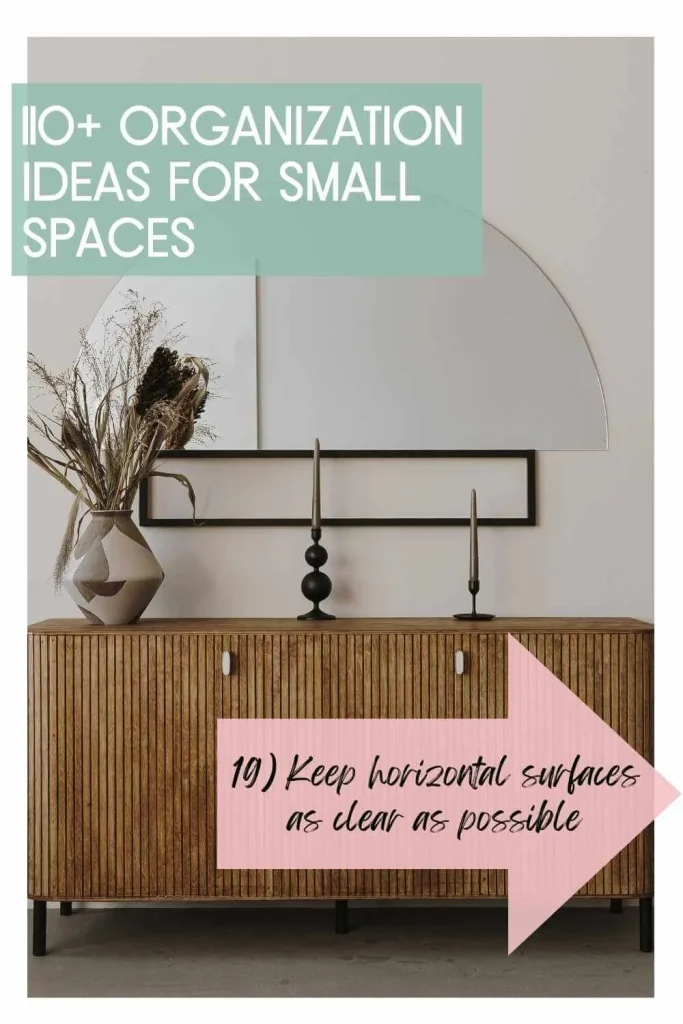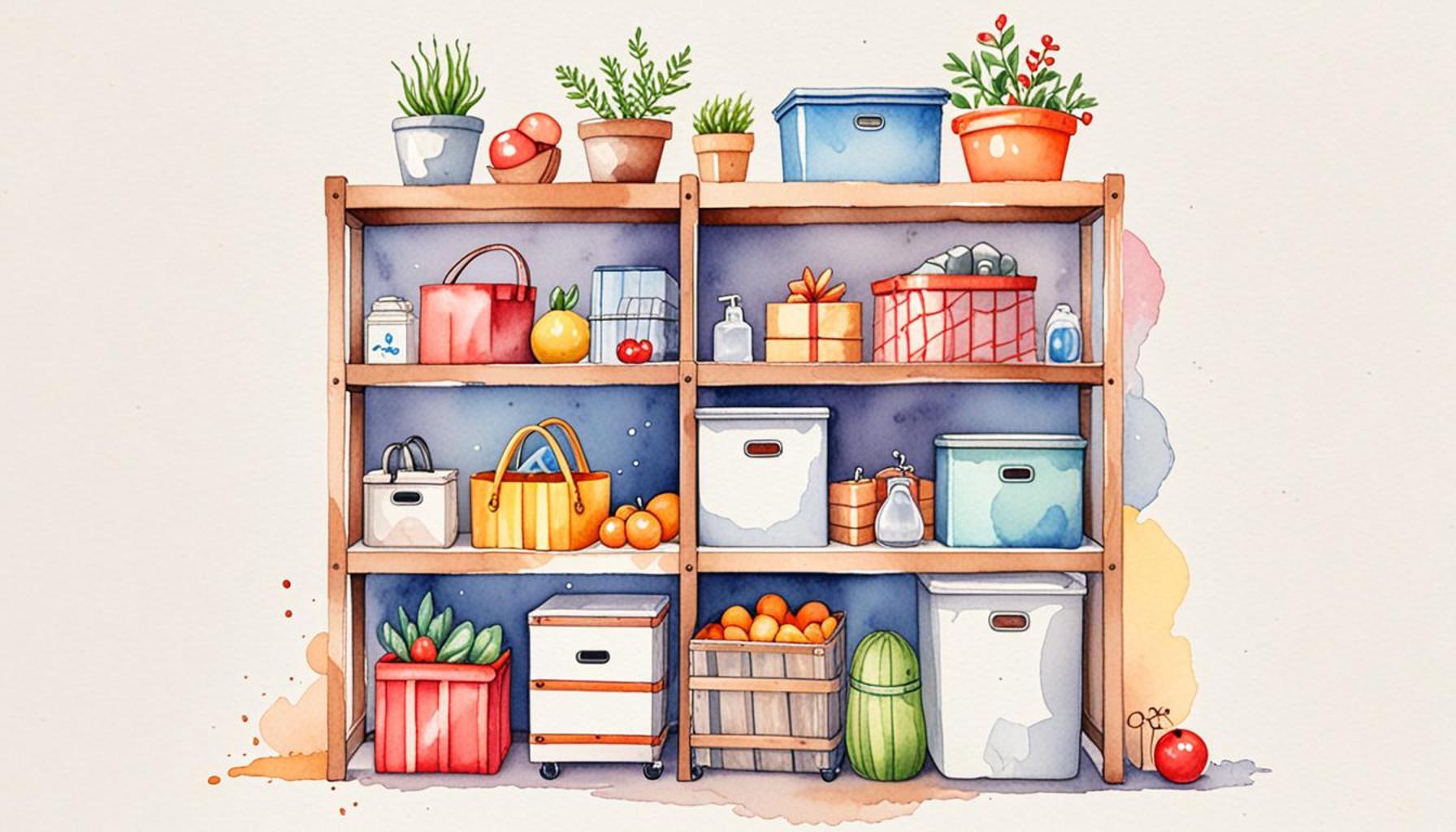The Art of Grouping: Organization Techniques to Reduce Clutter and Improve Functionality

The Importance of an Organized Space
In our modern lives, maintaining organization is not just a luxury but a necessity. With multitasking becoming the norm and distractions lurking around every corner, a clutter-free environment can drastically impact our productivity and overall well-being. Clutter can quickly transform from a minor annoyance into a major roadblock, inhibiting our ability to think clearly and act decisively. This is where the concept of grouping takes center stage.
The idea of grouping emphasizes that organized spaces lead to enhanced functionality. By categorizing and arranging items based on their purpose or frequency of use, individuals can create a harmonious environment that supports their daily activities. The benefits of mastering the art of grouping are numerous and transformative:
- Increased Productivity: Imagine sitting at your desk, surrounded by clutter. It’s easy to get distracted or waste time searching for essential documents. By removing unnecessary items and grouping related materials together, you create a clutter-free zone that promotes concentration and efficiency.
- Enhanced Aesthetics: A well-organized space is pleasing to the eye. For instance, a beautifully arranged bookshelf with color-coded books can become a stunning focal point in a room, making it not just functional but also an aesthetic delight.
- Time-Saving: Consider the time lost rummaging through a messy kitchen drawer to find a spatula. By grouping cooking utensils in labeled containers, the time spent searching diminishes, allowing for more time to enjoy the cooking process itself.
Exploring Effective Grouping Techniques
Transitioning from chaos to order isn’t a mystical art; it’s a series of practical techniques that can be employed in various environments. Some popular grouping methods include:
- Color Coding: This method is particularly effective for organizing paperwork in home offices or for arranging files in a digital format. Assigning colors to specific themes or projects can help you quickly locate the materials required, thus fostering a smoother workflow.
- Labeled Bins: Using labeled bins in storage areas can significantly increase accessibility and organization. For example, in a child’s playroom, categorizing toys in labeled bins helps little ones learn to put things away, while also making it easier for parents to maintain clarity in the space.
- Designated Areas: Establishing specific spots for particular items can prevent overflow and disorganization. In your kitchen, you might create a designated baking station, complete with mixing bowls, ingredients, and utensils within arm’s reach, to streamline meal prep.
Tailored Strategies for Different Spaces
As you discover innovative grouping techniques, consider how they can be adapted to fit various spaces:
- Home Offices: An efficient workstation with grouped supplies can reduce stress and enhance productivity. For example, keep a tray for daily essentials like pens, notebooks, and your calendar to streamline your workflow.
- Kitchen Organization: Implementing methods like the “one-touch rule”—where you handle each item just once when putting it away—can eliminate cross-contamination and ensure everything has its place, fostering a smooth cooking environment.
- Closet Grouping: Maximize your closet space by grouping clothes by type or occasion, such as workwear, casual outfits, and evening attire. Implementing uniform hangers can also create a neat and consistent look that’s visually appealing.
By embracing the art of grouping, you can not only achieve a more functional and organized environment but also a more serene and visually pleasing one. Whether you’re looking to optimize your workspace, streamline your kitchen, or enhance your closet, the principles of grouping can be a game-changer. Are you ready to transform your chaotic spaces into harmonized sanctuaries? Your journey towards organization and clarity begins now.

DISCOVER MORE: Click here to gain insights on the One Year Rule for decluttering
Exploring Effective Grouping Techniques
Transitioning from chaos to order isn’t a mystical art; it’s a series of practical techniques that can be employed in various environments. Mastering the art of grouping allows individuals not only to reduce clutter but also to enhance the functionality of their spaces. With well-thought-out organization, the mundane act of searching for items transforms into a streamlined experience. Here are some effective grouping methods that can be easily integrated into daily life:
- Color Coding: This method proves to be particularly effective for organizing paperwork in home offices or arranging files digitally. By assigning distinct colors to specific themes or projects, you’ll be able to quickly navigate through your materials, fostering a smoother workflow. For instance, if you have project folders, use a different color for each project; bright blue for one, vibrant green for another. This simple technique can save precious minutes that add up over time.
- Labeled Bins: Utilizing labeled bins in storage areas significantly increases accessibility and overall organization. Consider a child’s playroom, where categorizing toys into labeled bins fosters a sense of responsibility and makes it easier for children to learn the importance of putting things away. This system doesn’t just simplify cleanup; it also helps parents quickly locate the toys needed for playtime, making it a win-win for everyone.
- Designated Areas: Establishing specific spots for particular items helps to prevent overflow and disorganization across your living or workspaces. For example, in your kitchen, create a designated baking station that includes mixing bowls, ingredients, and utensils within arm’s reach. By having all baking supplies grouped together, you streamline meal prep, enabling you to move smoothly from one task to the next without the added stress of searching for misplaced items.
Tailored Strategies for Different Spaces
As you discover innovative grouping techniques, it’s essential to consider how these can be adapted to fit various environments. Different spaces have unique needs, and applying tailored strategies can yield remarkable results:
- Home Offices: In a home office, an efficient workstation with grouped supplies reduces stress and enhances productivity. Organize your desk by utilizing trays or drawer dividers for daily essentials such as pens, notebooks, and calendars to maintain a focused workflow, allowing you to dive into tasks without distraction.
- Kitchen Organization: Implement methods like the “one-touch rule”—a principle where you handle each item just once when putting it away. This technique not only limits cross-contamination but also ensures everything has its place, creating a smoother cooking environment and ultimately making the cooking experience more enjoyable.
- Closet Grouping: Maximize your closet space by grouping clothes by type or occasion. For instance, organizing your wardrobe into categories like workwear, casual outfits, and evening attire enables you to dress quickly without the stress of rummaging through disarray. Additionally, using uniform hangers can create a neat and consistent look that’s visually appealing, making it easy to select outfits while simultaneously adding to the aesthetic of your closet.
By embracing the art of grouping, not only can you achieve a more functional and organized environment, but you can also cultivate a serene space that reflects clarity. Whether your aim is to optimize your workspace, streamline your kitchen activities, or enhance the overall organization of your closet, the principles of grouping truly redefine how we interact with our everyday environments.
The Art of Grouping: Organization Techniques to Reduce Clutter and Improve Functionality
As we delve deeper into the art of grouping, it’s essential to understand how effective organization can transform both physical and digital spaces. By employing various techniques, individuals can experience a significant reduction in clutter while simultaneously enhancing functionality.
One approach is the use of categorization, which involves segmenting items based on their purpose or frequency of use. This technique can dramatically streamline daily tasks. For instance, in a workspace, grouping similar tools—such as pens, papers, and electronic devices—can create a more efficient environment, reducing unnecessary time spent searching for essential items.
Additionally, the concept of hierarchical organization can further enhance functionality. Arranging items in order of priority or importance can ensure that the most frequently used items are easily accessible. This principle can also be applied in digital spaces, where folder structures and tags play a crucial role in managing information effectively.
Moreover, adopting a visual grouping strategy through the use of colors, labels, or containers can simplify the identification of various items. By creating a color-coded system or labeled bins for different categories, individuals can create an aesthetically pleasing space that is intuitive and easy to navigate. This not only fosters a sense of calm but also encourages a more organized lifestyle.
Furthermore, incorporating technology into the grouping process can augment traditional methods. Digital tools and apps designed for organizational purposes can assist in maintaining order both physically and digitally, providing reminders and suggestions for decluttering. By implementing these techniques, individuals can uncover the long-lasting benefits of a well-organized environment, leading to improved productivity and a more enjoyable space to live or work in.
| Category | Key Features |
|---|---|
| Categorization | Organizing items based on purpose or usage frequency |
| Visual Grouping | Using colors or labels for easy identification and access |
Exploring these organization techniques can captivate anyone interested in achieving an enhanced level of productivity. Whether in a home office or a personal workspace, employing such strategies promises to transform not just the environment but also the mindset of the individual tasked with maintaining it. Thus, embracing the art of grouping emerges as both a practical and enlightening journey toward a clutter-free life.
DISCOVER MORE: Click here for innovative decluttering techniques
Creative Grouping Methods for Everyday Items
Grouping isn’t merely about placing items together; it’s about crafting systems that resonate with your lifestyle and enhance your efficiency. Everyday items can easily become cluttered if not managed through effective grouping techniques. Here are some innovative approaches to consider:
- Magnetic Strips: An often-overlooked technique for kitchen organization, magnetic strips can be a game changer. By attaching a strip to the wall or inside cabinet doors, you can keep metal utensils, knives, and even spice tins neatly arranged and easily accessible. This allows you to free up drawer space while ensuring that cooking essentials are visible and ready to use, all while cutting down on kitchen chaos.
- Rotating Organizers: Whether in a bathroom or on a countertop, a rotating organizer can maximize vertical space and simplify access to items. These handy tools can house makeup, hair accessories, or cleaning supplies in compact spaces. By grouping similar items together on a rotating stand, reaching for your favorite lipstick or those essential cleaning products becomes a breezy task, ultimately decluttering your environment and improving efficiency.
- Digital Grouping: In our technology-driven world, digital clutter has become just as overwhelming as physical clutter. Organizing your digital files through the use of folders and tags can simplify the way you access information. Consider refining your email inbox by setting up folders based on projects or priority levels. Implementing tools such as filter rules can automatically categorize incoming messages, reducing the energy spent on sorting through emails and allowing you to focus on what truly matters.
Leveraging the Benefits of Grouping in Various Areas
As you delve deeper into the art of grouping, it’s essential to recognize its specific applications across various domains of life:
- Home Decor: When selecting decorative items, grouping them based on style or color can create a cohesive design aesthetic. For instance, creating a visual vignette with a series of similar-themed decorations—like framed family photos or travel souvenirs—can enhance the appeal of your living space. This intentional grouping not only reduces visual clutter but also tells a story, inviting viewers to engage with your personal narrative.
- Gardening Supplies: Garden enthusiasts know the importance of organization when it comes to tools and supplies. A dedicated gardening nook with grouped containers for soil, plant food, seeds, and tools can significantly reduce the time spent searching for essentials. By creating labeled sections in a shed or garage space, you foster an environment that encourages continual gardening without the frustration of disorganization.
- Task and Project Management: For anyone navigating multiple responsibilities, organizing tasks by category or urgency can expedite productivity. Utilizing apps that allow you to group tasks into projects—be it for work, home, or personal goals—ensures that nothing falls through the cracks. For example, separating work-related tasks from personal errands with color-coded priority indicators can help you maintain clarity of focus and propel you toward completion.
As you implement these varied grouping methods in your daily life, remember that the aim is to transform the way you interact with your space, maximizing functionality and reducing the distractions that clutter can bring. The art of grouping ultimately empowers you to reclaim control over your environment, one thoughtfully organized section at a time.
DIVE DEEPER: Click here to discover how decluttering can enhance your mental clarity
Conclusion: Embracing the Power of Grouping
In a world where distractions abound and chaos can quickly infiltrate our spaces, the art of grouping emerges as a vital ally in creating order and enhancing functionality. By understanding and employing effective organization techniques, we not only address clutter but also pave the way for improved efficiency in our daily routines. From utilizing magnetic strips in the kitchen to implementing digital grouping to streamline productivity, these methods offer practical solutions to our modern-day challenges.
As we reflect on the myriad applications of grouping—be it in home decor, gardening, or project management—it’s clear that intentional organization fosters a sense of calm and purpose. By clustering items based on function, style, or necessity, we can transform our environments into well-oiled machines that support our activities rather than hinder them.
Ultimately, incorporating these techniques into our lives is not just about tidiness; it’s about creating a foundation for creativity, focus, and achievement. As you embark on your journey to declutter and redesign your spaces, consider how the principles of grouping can redefine your interactions with your surroundings. Embrace this transformative practice to reclaim your space, and watch how improved organization can lead to newfound clarity and a more fulfilling lifestyle.


